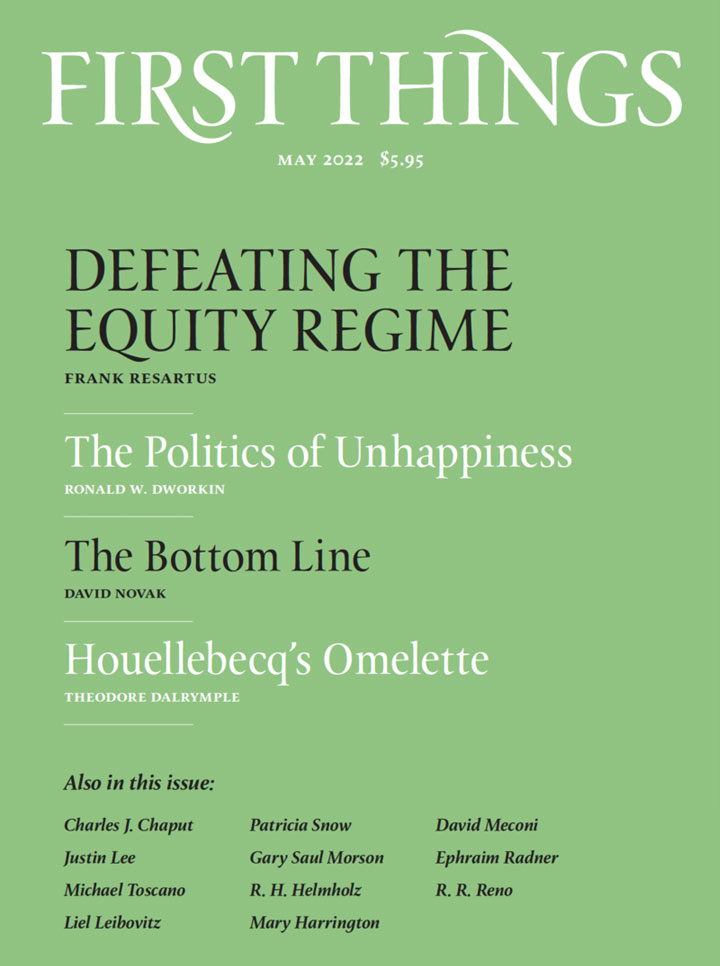Bad reviews killed the poet Keats, so the story goes. Even though the tale has been debunked, it remains popularly repeated. We enjoy the éclat of unjust criticism, especially of the famous, even as we relish pitying the weakness of the oversensitive. The great film director Akira Kurosawa reportedly tried to kill himself after one of his movies was panned. The death of the writer Susan Taubes, an expert on Simone Weil, seems to have been linked to the thrashing given to her first and only novel.
Although suicides may be the outliers, the list of writers whose ill-treatment at the hands of critics led to their despair, reticence, and silence is long. Mostly, their fates are remembered as defamatory bits of trivia in our educated conversation. But perhaps, following the lead of another figure of literate gossip, we should take more seriously the pernicious role of ridicule in our common life, not to mention in our personal behavior.
Germaine de Staël (1766–1817) is today remembered as a proto-feminist and advocate of “enlightenment,” leading forces of republican reform early in the Revolution, and later standing as a critic of Napoleon’s tyranny. She was a prolific writer from a powerful political family, and her early novels were viewed as anti-religious—talented young women forced into nunneries or bound to social roles, their gifts wasted and spirits suffocated—and her essays, pamphlets, and intellectual friendships seen as subversive. Often judged an exemplar of social liberation, she in fact seems to have had rather traditional views about sexual difference, and her genius was more influentially deployed in the realm of culture and the arts than in radical political activism. She was listened to by neither monarchist nor republican in that violent era.
Whatever her political identity, de Staël certainly cannot be ranged among the patrons of today’s internet character assassination and intellectual mutilation. One of her most consistent themes is the socially destructive power of public ridicule. A follower summed up her argument: The “habit of ridicule” constitutes the “dry rot” of a generous imagination. De Staël wanted to safeguard creative thinking. She was convinced that public mockery and scorn are the enemies of inventive thought, which by its nature must take risks.
The social position of women writers in her time led de Staël to reflect on the act and experience of public ridicule from a particular perspective. Women’s virtues and value were, in the public sphere, almost wholly confined to domestic matters. If they wrote and published—which not a few did—they were expected to focus on matters that dealt with the domestic sphere, such as conjugal love, motherhood, and the ordering of family and affections. To stray beyond these topics in public discourse was to trespass into a realm where the masculine writer was expected to hold sway. Politics, art, social concerns, theology, and philosophy were viewed as male domains to be jealously guarded.
Well into the early twentieth century, de Staël was subjected to a torrent of critiques and insults related to her sex, clustered around her purported lack of femininity: “trying to be a man,” “sounding like a man,” “pretending to be a man.” Public characterizations of her work, penned by otherwise respected critics, descended into the personal, trading in vicious rumors and finally painting her as ugly, boorish, crude, and sexually repellant. These last descriptions were so far from the truth—de Staël was among the most beautiful feminine figures of her era, by the measures of the times—that a reader today cannot help but be struck by the way ideological disdain so easily distorts physical perception itself. It mounts a toxic invasion of the whole cognitive process.
De Staël’s intellectual alertness drove her to think all this through. Her works frequently treat the theme of society’s tendency to berate women intellectuals. A short essay on “women who write” in her popular collection “On Literature” summarizes some of her reflections. As she puts it: In monarchies, women writers fear ridicule; in republics, they are hated. The combination of the two—derision and malice—limns the full cultural habit of ridicule.
In a monarchy, de Staël explains, women writers, who are viewed as having no other purpose in their endeavors than vainglory, are utterly “dependent on opinion” and its judgments. Men, by contrast, have had centuries to develop socially acceptable motives for writing in the face of opposition (courage, moral commitment, and honor). In the revolutionary republic, however, the terrain shifts. There is a general disdain of reason and excellence, and public opinion views women who read, think, or converse—let alone who write—simply as enemies of politically imposed mediocrity. To be a woman writer in her era, de Staël suggests, is to subject oneself to an enveloping assault on one’s “dignity and grace,” something that inevitably saps the spirit.
But women writers are only one object of ridicule. De Staël sees ridicule as a larger cultural habit that undermines moral and intellectual integrity altogether. In her pioneering work on German culture, she repeatedly returns to this theme: The French (in contrast to the Germans) are a people who value ridicule, their own social organization being one in which people seek honor, always at the expense of others. The French are thus captive to group-think, which is ever the enemy of “love, enthusiasm, and religion.” Ridicule undermines family and indeed all human relations of faithfulness—not only when it is aimed at those we love, but also when, as we listen to those we love tear others down, we see exposed in them a consuming malice. Caught in a cycle of mutual denigration, cultures devoted to ridicule end up thinking less of those they most cherish. The world is dirtied.
But as de Staël explains, ridicule goes deeper still. It destroys the disciplines of thought, becoming a stand-in for careful attention to difficult ideas and texts. Ridicule often covers up laziness of mind with claims that certain authors are too “obscure” or “boring.” The social habit of ridicule thrives in a populace fed on newspaper snippets and haphazard gossip and conversation. The very philosophy of materialism, she argues, is one of the easiest ways to “manage” such intellectual laziness, tied as it is to a disdain for anything that would assert the “dignity of man” as a framework for listening to others. In a materialist culture of ridicule, she writes, production and numbers are all that truly “count” critically. Any intellectual project that is “unsuccessful” according to the metric of quantifiable evidence is thus intrinsically worthy of ridicule. While de Staël was no orthodox Christian—her spiritual enthusiasms lay with the German Romantics—her observations were religiously accurate and prescient.
It is common, in the midst of today’s internet-driven journalistic pugilism, to decry the weak constitutions of those who wilt under the pressures of “pugnacious” critique and personal attack. Too much heat? Get out of the kitchen! De Staël’s desire that people be allowed simply to express themselves with some modicum of peace sprang from a deeper appreciation for the way societies can further—or weaken—human dignity, as they inform how people talk about one another. And in arriving at this insight, so urgently needed today, she drew from the wells of Jewish and Christian sensibility.
Among modern Judaism’s greatest theological writings are the treatises of Rabbi Yisrael Meir Kagan, known as “The Chofetz Chaim” or “Desirer of Life.” The epithet is drawn from Psalm 34:12–13: “What man [is he that] desireth life . . . ? Keep thy tongue from evil, and thy lips from speaking guile.” Rabbi Kagan used this verse as a title for an extensive legal discussion of evil speech (lashon hara) and gossip (rechilut), developing the Talmudic claim that speaking evil—even if true—of another person is a sin that surpasses murder and idolatry, and that its prevalence among the Jewish people caused the Temple’s destruction. The prohibition against slander of any kind is built not simply on scriptural command (see Leviticus 19:16), but on a deeper sense that such speech represents a blaspheming of the Creator and an empowering of Satan, the primordial “Accuser.” Jesus and his followers were no less categorical in their condemnation of ridicule and evil speech (see Matt. 5:22 and12:36–7; the procedures of Matt. 18; and James 3:5–12). This tradition touches realities that go well beyond the perverse pleasures of critical assault, aiming at the meanness that circulates beneath the surface of everyday life. By this analysis, cultures of ridicule promote human sin at its most insidious; everyone is encouraged to be a Satan.
De Staël once wrote that “the dread of ridicule is like the sword of Damocles, which no banquet of the imagination can ever make us forget.” She may well have been a better writer without this hanging threat that cast its gloomy shadow over her career. Who can say? But certainly, without it, we would be the better readers, not only of books—de Staël’s included—but of the book of nature and our social lives, which is to say God’s world.
I With You Am
Forty days after his resurrection, Jesus meets the remaining eleven disciples on a mountain in Galilee. He…
Christian Ownership Maximalism
Christendom is gone. So, too, is much of the Western civilization that was built atop it. Christians…
The First Apostle and the Speech of Creation
Yesterday, November 30, was the Feast of St. Andrew, Jesus’s first apostle. Why did Jesus call on…



